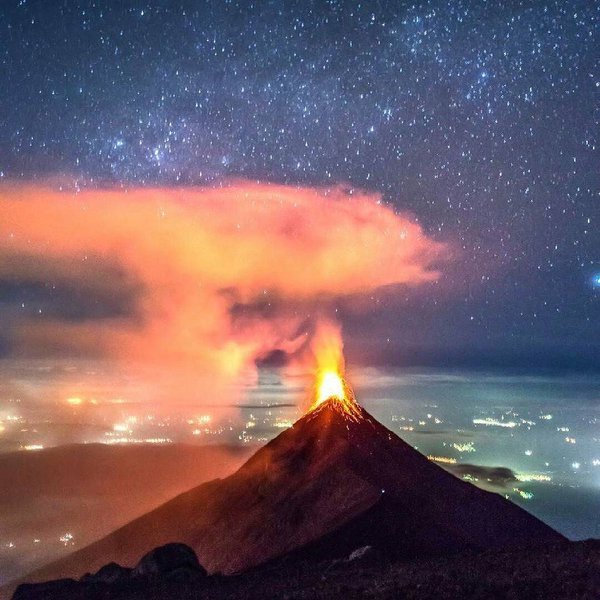
© Maximo Nivel via TwitterFuego volcano eruption, December 15, 2015.
Another phase of strong, increased activity was observed at the Fuego volcano, Guatemala on December 14, 2015, Volcano Discovery reported. Frequent, intense explosions and ash plumes accompanied with loud shock waves marked the 13th paroxysmal episode of the 2015 volcano activity.
Two new lava flows were observed at the Fuego volcano, accompanying intense and frequent explosions on the evening of December 14 (local time).
Between 4 and 6 explosions per hour were reported with ash plumes, followed by loud shock waves, rising up to 1 km (3 280.8 feet) above the volcano summit. New lava flows were 800 m (2 624.7 feet) long and have started to head towards the Santa Teresa on west flank, and Trinidad on south flank drainages.The reported event is the 13th paroxysmal episode of this year, and should the activity of the volcano increase further, dangerous pyroclastic flows could take place over the coming hours or days. Residents have been advised to avoid the river beds and valleys at the feet of the mountain at all times.
INSIVUMEH reported that on November 29, 2015
activity at Fuego increased significantly, characterized by large and strong explosions, ash plumes, and lava flows. Ash plumes rose as high as 2.2 km (7 217.8 feet) above the crater and drifted 40 km (24.9 miles) W and SW. Lava fountains rose 500 m (1 640.4 feet) above the crater, feeding four lava flows that traveled 3-4 km (1.9-2.5 miles) down the Ceniza, Trinidad, Las Lajas, and Santa Teresa drainages.
Comment: According to Volcano Discovery, 39 volcanoes around the world have recently erupted, and 32 of them are associated with the Ring of Fire, where seismic activity appears to be dramatically increasing amid a progression of recent disasters.
See also: SOTT Earth Changes Summary - November 2015: Extreme Weather, Planetary Upheaval, Meteor Fireballs